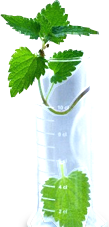



Author(s): Divya Bisen*, Ashish Pratap Singh Chouhan and Vikas Sharma
This study was to establish a relationship between the experimental higher heating value which was determined by a bomb calorimeter and the theoretical higher heating value, which was calculated using biomass input values and a machine learning technique and presents the heating value of the selected agricultural biomass materials (soya husk, rice husk, bagasse, cotton stalk, peanut shell, coconut shell, eucalyptus wood, and wood sawdust) experimentally by using the conventional bomb calorimeter and the heating value also predicted based on the input parameters of the selected biomass materials such as elemental analysis and proximate analysis by using the novel machine learning tool R (rattle) and found very close output values of the heating value. This method can provide the authentic values of the output heating values with minimum errors and it can be useful for research work on biomass, biofuels and industrial use for power production. The Higher Heating Values (HHV) of the entire sample set were then predicted from the results of both analyses using a variety of empirical equations that contain linear and nonlinear terms. Finally, compare the actual HHV to the predicted HHV.